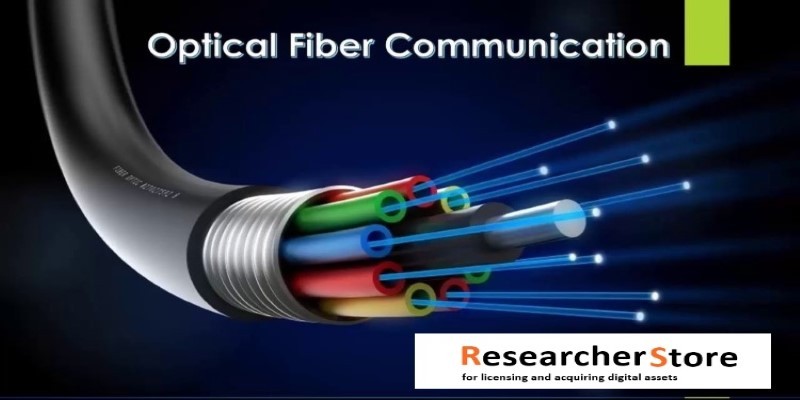
About Course
Optical Fiber Communication. For years there has been a need for that faster internet connection. People rely on the internet for almost everything, information/research, streaming movies from popular services like Netflix or Hulu, online gaming, even with mobile phones there is a need for that faster connection.
Optical Fiber Communication is the answer! Our old copper-based cabling simply won’t support the speeds and data capacity needed in this day in age. Big companies such as AT&T/Verizon & even the U.S. Government have invested in updating our old copper cabling to Fiber Optic Cabling. So why is it not everywhere? After investing billions in upgrading our old copper cabling to fiber cabling the communications industry realized the manpower simply isn’t there to install it fast enough. What does this mean? It means there are a lot of jobs out there in this field, the need for fiber optic professionals is high. I am here to teach you the basics of fiber optics. A lot of this course is based on the curriculum I teach at the University of Riverside that gives students a CFOT(Certified Fiber Optic Technician) Certificate from the FOA(Fiber Optics Association).
This Optical Fiber Communication course is intended for anyone who wants to learn the basics of fiber optics, maybe you are curious about the buzz around fiber optics, or maybe you are a systems administrator and IT manager that wants to gain knowledge of fiber optics.
Course Content
Optical Fiber Communication
-
Historical development of Optical Fiber communication (1st, 2nd, 3rd, 4th and 5th Generation system)
00:00 -
Need of fiber optic communication systems
00:00 -
Comparison of fiber optic communication system with copper wire communication system
00:00 -
Block diagram and working of fiber optic communication system
00:00 -
Structure, basics and types of optical fibers (step index and graded index Optical Fiber)
00:00 -
Comparison of step index optical fiber and graded index Optical Fiber with different parameters
00:00 -
Single mode Optical fiber and Multi-mode Optical Fiber in Optical Fiber Communication
00:00 -
Comparison of Multimode step index fiber and Multimode graded index fiber
00:00 -
Comparison of Multimode step index fiber and Multimode graded index fiber
00:00 -
Refractive index basics, definition & examples in optical fibre communication
00:00 -
Refraction and reflection of ray in optical fibre communication
00:00 -
Total internal reflection and Critical Angle in optical fibre communication
00:00 -
Snell’s Law and Critical Angle basics, definition, Formula and Examples in Optical Communication
00:00 -
Optical Fiber mode theory in optical communication
00:00 -
Acceptance Angle and Numerical Aperture NA (basics, definition & derivation) in optical communicatio
00:00 -
V Number or Normalized Frequency of Optical Fiber
00:00 -
Relationship in between Number of modes M and Normalized frequency or V number of Optical Fiber
00:00 -
Examples on Numerical Aperture, Acceptance Angle and Critical Angle in Optical communication
00:00 -
Examples on Numerical Aperture, Acceptance Angle, Critical Angle and Relative Refractive Index
00:00 -
Examples based on Mode Theory of Optical Fiber
00:00 -
Examples on Number of Modes M and Normalized Frequency or V Number of Optical Fiber
00:00 -
Ray Optics Representation (Meridional Ray and Skew Ray)
00:00 -
Optical Fiber Fabrication
00:00 -
OVPO – Outside Vapor Phase Oxidation Fiber Fabrication Method
00:00 -
VAD – Vapor phase Axial Deposition Fiber Fabrication Method
00:00 -
MCVD – Modified Chemical Vapor Deposition Fiber Fabrication Method
00:00 -
PCVD – Plasma activated Chemical Vapor Deposition Fiber Fabrication Method
00:00 -
Photonic crystal fibers PCF basics, structure, types, working & comparison in optical communication
00:00 -
Double Crucible Method for Fiber Fabrication (Basics, Diagram, Working, Advantages & Disadvantages)
00:00 -
Fiber Materials requirements, basics, types & comparison of fiber materials in optical communication
00:00 -
Windows and Spectral bands of optical communication (Basics, Attenuation, Absorption & Optical sourc
00:00 -
Digital Transmission Hierarchy in Optical communication
00:00 -
Phase Velocity and Group Velocity in Optical Fiber
00:00 -
History of Attenuation in Optical communication
00:00 -
Planar LED (Basics, Structure, Working & Radiated Power)
00:00 -
Attenuation of Signal in optical fiber cable
00:00 -
Examples of Attenuation of signal in Optical fiber cable
00:00 -
Material Absorption in Optical Fiber Cable – Attenuation of Signal
00:00 -
Fiber Bending Losses in Optical fiber
00:00 -
Scattering Losses in Optical Fiber Cable
00:00 -
Dispersion Losses in Optical Fiber
00:00 -
Characteristics, Quantum Efficiency, Protection, Effect of Temperature and Irradiance of The LED
00:00 -
LED – Light Emitting Diode (Characteristics, Working & Application)
00:00 -
Planar LED (Basics, Structure, Working & Radiated Power)
00:00 -
Surface Emitting LED (Basics, Structure, Wokring, Radiation, Advantages, Properties & Disadvantages)
00:00 -
Edge Emitting LED (Basics, Structure, Wokring, Radiation, Advantages, Properties & Disadvantages)
00:00 -
Examples of LED based on Radiated Power, Interal Quantum Efficiency and External Quantum Efficiency
00:00 -
Comparison of LED and LASER with different Parameters
00:00 -
LASER basics, Properties, Working, Amplification, Stimulated Emission & Applications
00:00 -
Mode Hopping of LASER and Frequency Chirps of LASER
00:00 -
Fabry Parot LASER basics, Structure, Modes, Working and Radiation Mechanisms
00:00 -
Distributed Feedback LASER or DFB LASER basics, Structure, Working and Radiation Power
00:00 -
Power Launched by LED in Step Index Fiber
00:00 -
Power Launched by LED in Graded Index Fiber
00:00 -
Lensing Schemes of Optical Fiber
00:00 -
Fiber to Fiber Joint Losses
00:00 -
Fiber Splicing basics, requirements, types, working, structure and classification
00:00 -
Optical Fiber Connector Basics, Requirements, Types and Working
00:00 -
Equilibrium Numerical Aperture basics and it’s significance
00:00 -
Photo Diode
00:00 -
Quantum Efficiency, Responsivity & Dark Current of Photo Detector/ Figure of Merits of Photo Detecto
00:00 -
Examples on Photo Detector or Photo Diode
00:00 -
PIN Photo diode basics, construction, working, Advantages and Disadvantages
00:00 -
Avalanche Photo Diode Basics, Principle, Structure, Working, Electric Field, Advantage & Disadvantag
00:00 -
Examples on Avalanche Photo Diode
00:00 -
Comparison of PIN Photo Diode and Avalanche Photo Diode
00:00 -
Eye Diagram Basics, Example, Pattern & Interpretation of Eye Diagram
00:00 -
Receiver Performance by BER, Sensitivity and Quantum Limits
00:00 -
Examples based on Power Launched using LED in Fiber
00:00 -
Point to Point Link of Optical Fiber Communication system
00:00 -
Link Power Budget Analysis of Optical Fiber Communication System
00:00 -
Example of Link Power Budget Analysis of Optical Fiber Communication System
00:00 -
Rise Time Budget Analysis of Optical Fiber Communication System
00:00 -
Example of Rise Time Budget Analysis of Optical Fiber Communication System
00:00 -
Optical Amplifier Basics, Types, Working & Applications
00:00 -
Semiconductor Optical Amplifier Basics, Working & Characteristics
00:00 -
Erbium Dopped Fiber Amplifier EDFA Basics, Working, Characteristics, Applications & Advantages
00:00 -
Raman Amplifier Basics, Architecture, Working, Characteristics and Types
00:00 -
Optical Couplers Basics, Types and Working
00:00 -
Parameters of Optical Couplers Optical Splitting, Excess Loss, Insertion Loss & Cross Talk
00:00 -
Optical Isolator
00:00 -
Optical Circulator
00:00 -
WDM Basics, Architecture, Components, Technologies and Features
00:00 -
OADM Basics, Types and Working
00:00 -
DWDM Basics, Architecture, Necessity, Operating Principle, Components, Types and Advantages
00:00 -
SONET/SDH Basics, Devices, Structure, Operation, Frame, Network and Applications
00:00 -
OTDR basics, Block Diagram, Operation, Display, Fault Location, Dead Zone & Attenuation Measurnment
00:00 -
Dispersion Measurement in Optical fiber
00:00 -
Optical and Electrical Confinement of LASER diode
00:00
Student Ratings & Reviews

